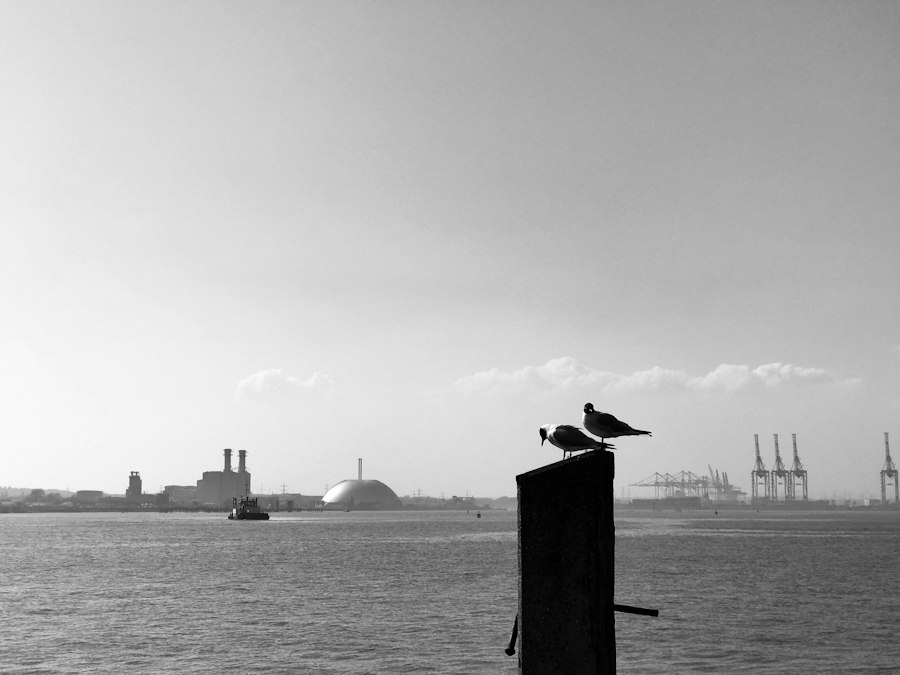Chemical reactions are fundamental processes that occur in various fields of science, including chemistry. In order to fully understand and predict these reactions, it is essential to have a grasp of the concepts of thermodynamics and kinetics. Thermodynamics deals with the energy changes that occur during a chemical reaction, while kinetics focuses on the rate at which a reaction takes place.
Summary
- Thermodynamics and kinetics are fundamental concepts in chemical reactions.
- Thermodynamics focuses on energy changes in reactions, while kinetics studies reaction rates.
- The relationship between thermodynamics and kinetics is crucial in understanding chemical reactions.
- Temperature, pressure, and catalysts can all affect the rate and direction of chemical reactions.
- Equilibrium and Gibbs free energy are important concepts in predicting the outcome of chemical reactions.
The Role of Energy in Chemical Reactions: A Thermodynamic Perspective
Energy plays a crucial role in chemical reactions. It is the driving force behind these reactions and determines whether they are feasible or not. The laws of thermodynamics provide a framework for understanding the energy changes that occur during a reaction.
The first law of thermodynamics, also known as the law of conservation of energy, states that energy cannot be created or destroyed, only transferred or converted from one form to another. In the context of chemical reactions, this means that the total energy of the reactants must be equal to the total energy of the products.
Enthalpy (H) and entropy (S) are two important thermodynamic properties that are used to quantify the energy changes in a reaction. Enthalpy is a measure of the heat absorbed or released during a reaction, while entropy is a measure of the disorder or randomness of the system. The change in enthalpy (∆H) and change in entropy (∆S) can be used to calculate the change in Gibbs free energy (∆G), which determines whether a reaction is spontaneous or not.
The Importance of Reaction Rates: A Kinetic Perspective
While thermodynamics provides information about the energy changes in a reaction, kinetics focuses on the rate at which a reaction occurs. Reaction rates are influenced by various factors, including temperature, concentration, pressure, and the presence of catalysts.
The rate of a chemical reaction is defined as the change in concentration of a reactant or product per unit time. It is determined by the frequency of collisions between particles and the energy with which they collide. The collision theory states that for a reaction to occur, particles must collide with sufficient energy and in the correct orientation.
Factors such as temperature, concentration, and pressure can affect the rate of a reaction. Increasing the temperature generally increases the rate of a reaction as it provides more energy to the particles, increasing their kinetic energy and collision frequency. Similarly, increasing the concentration or pressure of reactants increases the likelihood of collisions, leading to an increase in reaction rate.
The Connection Between Thermodynamics and Kinetics: Exploring the Relationship
| Metrics | Description |
|---|---|
| Thermodynamics | The study of energy and its transformations in a system |
| Kinetics | The study of the rate of chemical reactions and the factors that affect it |
| Activation Energy | The minimum amount of energy required for a chemical reaction to occur |
| Equilibrium Constant | The ratio of the concentrations of the products to the concentrations of the reactants at equilibrium |
| Gibbs Free Energy | The energy available to do work in a system at constant temperature and pressure |
| Reaction Rate | The speed at which a chemical reaction occurs |
| Entropy | A measure of the disorder or randomness of a system |
Thermodynamics and kinetics are closely related and work together to provide a comprehensive understanding of chemical reactions. While thermodynamics tells us whether a reaction is feasible or not, kinetics provides information about how fast the reaction occurs.
The relationship between thermodynamics and kinetics can be understood through the concept of equilibrium. At equilibrium, the forward and reverse reactions occur at equal rates, resulting in no net change in the concentrations of reactants and products. Thermodynamics tells us whether a reaction will reach equilibrium or not, while kinetics provides information about how long it takes for equilibrium to be reached.
The Effect of Temperature on Chemical Reactions: A British Perspective
Temperature plays a significant role in chemical reactions, and its effect has been observed throughout British history. One notable example is the development of steam engines during the Industrial Revolution. The use of high temperatures allowed for more efficient conversion of heat energy into mechanical work, revolutionizing transportation and industry.
Another example is the Haber-Bosch process, developed by British chemist Fritz Haber and German chemist Carl Bosch. This process involves the synthesis of ammonia from nitrogen and hydrogen gases at high temperatures and pressures. The use of elevated temperatures increases the reaction rate, allowing for higher production rates of ammonia, which is used in the production of fertilizers and explosives.
The Influence of Pressure on Chemical Reactions: A British Perspective

Pressure is another factor that can influence the rate and outcome of chemical reactions. In British history, the development of the steam engine by James Watt is a prime example. By increasing the pressure inside the engine, Watt was able to improve its efficiency and power output, leading to significant advancements in transportation and industry.
Another example is the synthesis of diamonds by British chemist Sir Charles Algernon Parsons. By subjecting carbon to extremely high pressures, Parsons was able to transform it into diamonds. This process is now used commercially to produce synthetic diamonds for various industrial applications.
The Impact of Catalysts on Chemical Reactions: A British Perspective
Catalysts are substances that increase the rate of a chemical reaction without being consumed in the process. They play a crucial role in many chemical reactions and have had a significant impact on British history.
One notable example is the development of the catalytic converter by British engineer Eugene Houdry. This device is used in automobiles to convert harmful pollutants from exhaust gases into less harmful substances. The use of catalysts in this process has greatly reduced air pollution and improved air quality in cities around the world.
The Significance of Equilibrium in Chemical Reactions: A British Perspective
Chemical equilibrium is a state in which the forward and reverse reactions occur at equal rates, resulting in no net change in the concentrations of reactants and products. Understanding equilibrium is essential for predicting and controlling chemical reactions.
In British history, one example of equilibrium is the development of the Haber-Bosch process mentioned earlier. By carefully controlling the temperature, pressure, and reactant concentrations, Haber and Bosch were able to achieve a high yield of ammonia at equilibrium.
The Significance of Gibbs Free Energy in Chemical Reactions: A British Perspective
Gibbs free energy is a thermodynamic property that determines whether a reaction is spontaneous or not. It takes into account both the enthalpy and entropy changes in a reaction.
In British history, the development of the steam engine by James Watt is an example of the significance of Gibbs free energy. By harnessing the energy from steam, Watt was able to convert heat energy into mechanical work, leading to significant advancements in transportation and industry.
The Fascinating Relationship Between Thermodynamics and Kinetics in Chemical Reactions and its Importance in the Field of Chemistry
In conclusion, understanding the basics of thermodynamics and kinetics is essential for fully comprehending chemical reactions. Thermodynamics provides information about the energy changes in a reaction, while kinetics focuses on the rate at which the reaction occurs. These concepts are closely related and work together to provide a comprehensive understanding of chemical reactions.
The relationship between thermodynamics and kinetics can be seen throughout British history, with examples such as the development of steam engines, the synthesis of ammonia, and the use of catalysts. These advancements have had a significant impact on transportation, industry, and environmental sustainability.
Overall, the study of thermodynamics and kinetics is crucial for advancing our understanding of chemical reactions and their applications in various fields. By gaining a deeper understanding of these concepts, scientists can continue to make significant advancements in chemistry and contribute to the betterment of society.
FAQs
What is thermodynamics?
Thermodynamics is the branch of physics that deals with the relationships between heat, work, and energy.
What is kinetics?
Kinetics is the branch of chemistry that deals with the rates of chemical reactions and the factors that affect them.
What is the difference between thermodynamics and kinetics?
Thermodynamics deals with the overall energy changes in a system, while kinetics deals with the rate at which those changes occur.
What are the laws of thermodynamics?
The laws of thermodynamics are: 1) energy cannot be created or destroyed, only transferred or converted; 2) the total entropy of a closed system always increases over time; and 3) it is impossible to reach absolute zero temperature.
What is entropy?
Entropy is a measure of the disorder or randomness of a system.
What is activation energy?
Activation energy is the minimum amount of energy required for a chemical reaction to occur.
What factors affect reaction rates?
Factors that affect reaction rates include temperature, concentration of reactants, surface area, and the presence of a catalyst.
What is a catalyst?
A catalyst is a substance that increases the rate of a chemical reaction without being consumed in the reaction itself.
What is the Arrhenius equation?
The Arrhenius equation relates the rate constant of a chemical reaction to the activation energy, temperature, and other factors.


